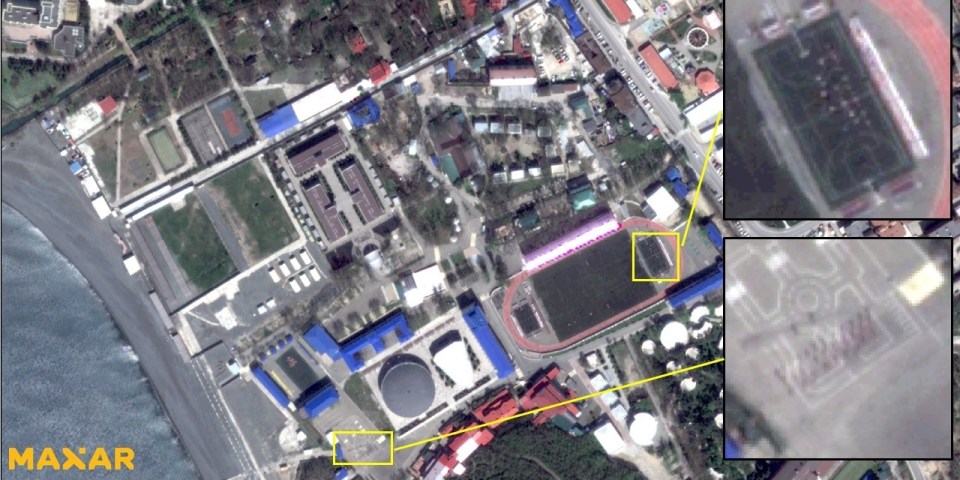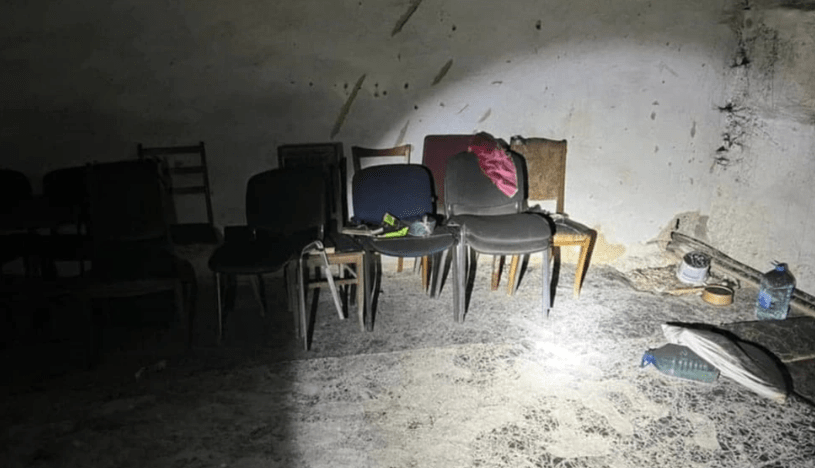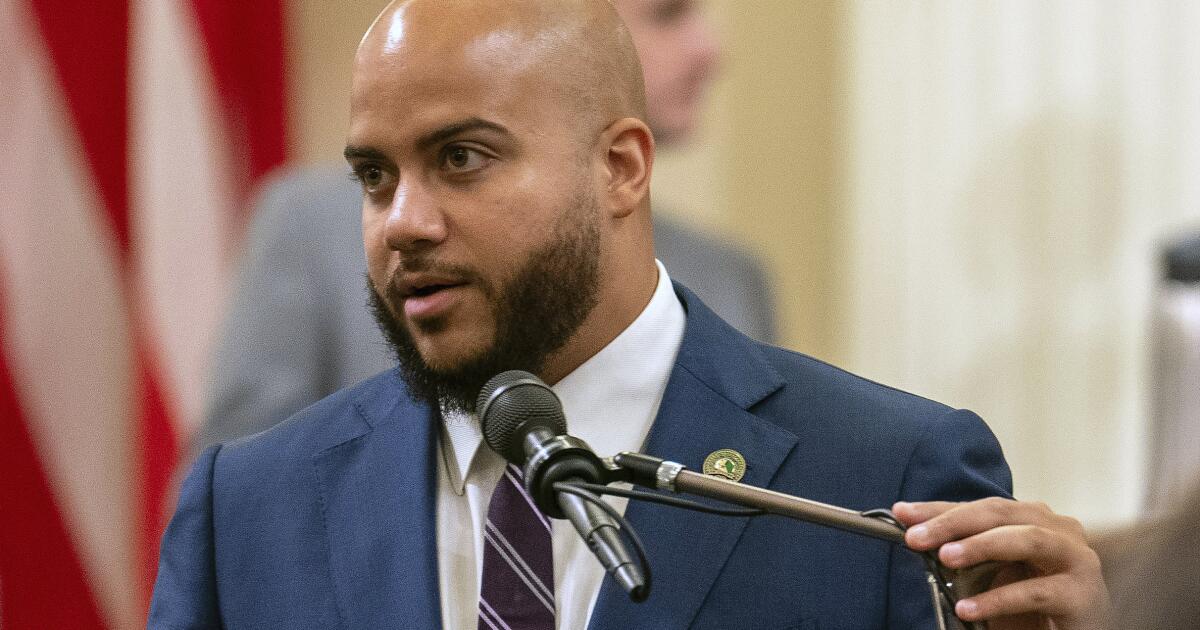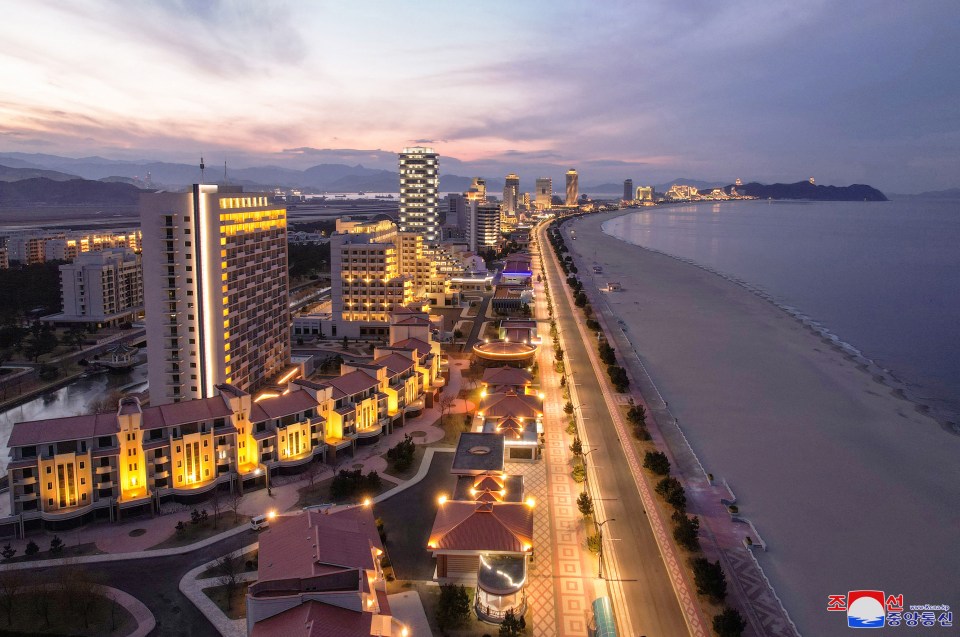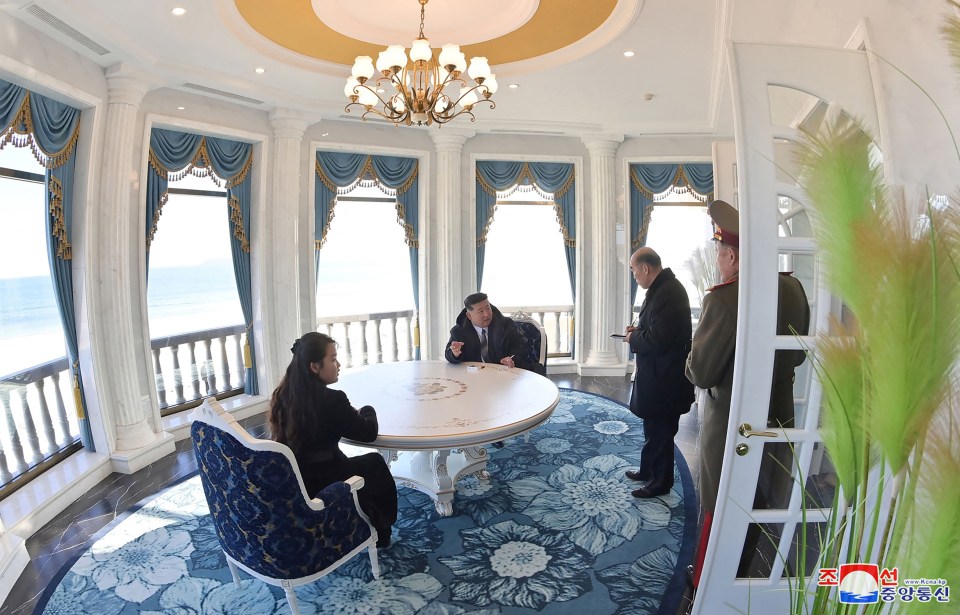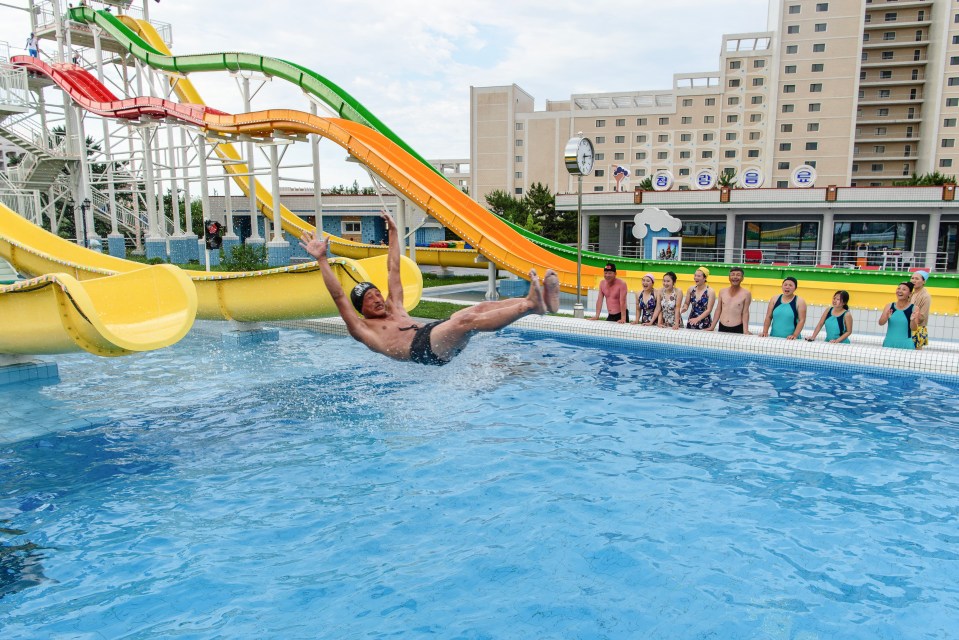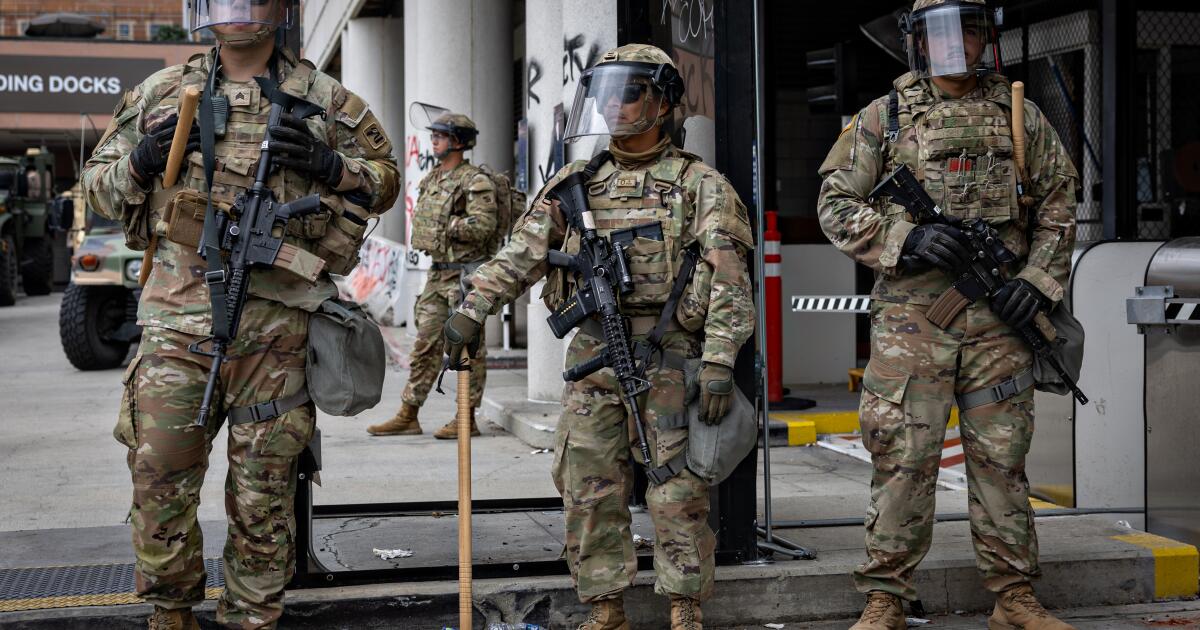Slave labeled ‘divisive’ imagery: L.A. arts and culture this weekend
A defining image of the horrors of slavery has emerged as the latest flashpoint in the Trump administration’s quest to root out what Trump has called “divisive, race-centered ideology” from the nation’s museums and national parks.
Earlier this week, the Washington Post broke the news that the administration had ordered the removal of signs and exhibits related to slavery at multiple national parks, “including a historic photograph of a formerly enslaved man showing scars on his back.”
The photo in question — “The Scourged Back,” 1863 — is among the most famous images of the Civil War era and has been credited with driving home the brutality of slavery to the masses in what would become a turning point for the abolitionist movement. The image, which appeared in the political magazine Harper’s Weekly the day after the battle of Gettysburg, showed the deeply scarred back of an escaped slave-turned-Union soldier referred to as “Gordon,” but whose real name may have been “Peter.”
The photo was copied and distributed far and wide in pamphlets and on cards, eliciting shock and raising awareness wherever it appeared. Today, the image is housed in the collections of major museums including the Smithsonian’s National Portrait Gallery and the National Gallery of Art, as well as at the Metropolitan Museum of Art.
The New York Times reported that the copy of the photo the administration has targeted for removal is on display at Georgia’s Fort Pulaski National Monument, which was a Union-captured Confederate stronghold that served as a prisoner-of-war camp. The story notes that a spokeswoman for the Interior Department wrote in an email that “all interpretive signage in national parks is under review”; she also “accused media outlets of spreading ‘false claims’ and ‘misinformation’ about the review, although she did not specify what information was incorrect.”
The review of signage, monuments and display materials at national parks, as well as at the Smithsonian’s 21 museums, stems from a March executive order titled “Restoring truth and sanity to American history.” In the order, Trump wrote that the Secretary of the Interior would work to identify “improper partisan ideology” at properties within its jurisdiction.
In August, Trump made it clear in a post on Truth Social that focusing on the country’s history of slavery was unacceptable. He criticized museums for being the last bastions of “woke” in the country, and zeroed in on the Smithsonian in particular for exhibits that discuss “how horrible our Country is, how bad Slavery was, and how unaccomplished the downtrodden have been — Nothing about Success, nothing about Brightness, nothing about the Future.”
It’s unclear if the indelible photo of Peter will remain on display in national parks, but one thing seems certain: The controversy surrounding the way we engage as a country with our shared history is likely to rage on for quite some time.
I’m arts and culture writer Jessica Gelt, looking back to make sense of the present. Here’s your arts news for the week.
On our radar this week
Newsletter
You’re reading Essential Arts
Our critics and reporters guide you through events and happenings of L.A.
You may occasionally receive promotional content from the Los Angeles Times.

Lee Byung-hun in the movie “No Other Choice.”
(Neon)
Beyond Fest
The event “proves once again why it has become much more than a genre festival and is now the best film festival in L.A.,” says Times film writer Mark Olsen, ”playing movies straight from Sundance, Cannes, Venice and Toronto with guests including Conan O’Brien, Al Pacino, Luca Guadagnino and John Carpenter.” The award-winning “No Other Choice,” Park Chan-wook’s adaptation of the Donald Westlake thriller “The Ax,” opens the festival, 7 p.m. Tuesday at the Aero.
Through Oct. 8. Aero Theatre, 1328 Montana Ave., Santa Monica; Egyptian Theatre, 6712 Hollywood Blvd.; Los Feliz Theatre, 1822 N. Vermont Ave. americancinematheque.com

Gustavo Dudamel performs with the Los Angeles Philharmonic at Walt Disney Concert Hall in April.
(Etienne Laurent / For The Times)
Gracias Gustavo
Gustavo Dudamel’s farewell season as the Los Angeles Philharmonic‘s music and artistic director begins as all his 17 seasons in Walt Disney Concert Hall have begun — with a world premiere. Ellen Reid’s “Earth Between Oceans,” a co-commission between the L.A. Phil and New York Philharmonic (which Dudamel will take over in 2026), evoking nature’s command of the four elements (earth, air, fire and water) as they operate in both cities. In our case, that involves contending with fires and our swelling oceans but also the promise of a future of unity through celebration of our multicultural communities. The opening program also includes Richard Strauss’ nature-saturated “Alpine Symphony.”
— Mark Swed
8 p.m. Thursday-Sept. 27 and 2 p.m. Sept. 28 Where: Walt Disney Concert Hall, 111 S. Grand Ave., downtown L.A. laphil.com

Francesca Zambello’s staging of “West Side Story.”
(Todd Rosenberg / Lyric Opera)
West Side Story
L.A. Opera turns to Broadway for this Leonard Bernstein-Stephen Sondheim-Jerome Robbins masterwork, which was originally conceived as an opera. James Conlon conducts the orchestra in such classic songs as “America,” “Somewhere” and “I Feel Pretty” as director Francesca Zambello utilizes Robbins’ original choreography in a “maximalist” production.
Through Oct. 12. Dorothy Chandler Pavilion, 135 N. Grand Ave., downtown L.A. laopera.org
The week ahead: A curated calendar
FRIDAY

The cast of South Coast Repertory’s production of ”Million Dollar Quartet,” includes Chris Marsh Clark as Johnny Cash, JP Coletta as Jerry Lee Lewis, Armando Gutierrez as Carl Perkins and Rustin Cole Sailors as Elvis Presley.
(Scott Smeltzer / SCR)
🎭 🎶 Million Dollar Quartet
On a December night in 1956, music legends Elvis Presley, Johnny Cash, Jerry Lee Lewis and Carl Perkins gather to jam on “Blue Suede Shoes,” “Great Balls of Fire,” “I Walk the Line,” “Who Do You Love?” and more in this jukebox musical written by Colin Escott and Floyd Mutrux.
Through Oct. 11. South Coast Repertory, Segerstrom Stage, 655 Town Center Drive, Costa Mesa. scr.org
🎥 Mysterious Skin
The Academy Museum presents a 4K screening of Gregg Araki’s haunting 2004 coming-of-age drama. In his review, Times critic Kevin Thomas wrote, “It’s hard to imagine a more serious or persuasive indictment of the horrors inflicted on children by sexual abuse.” Oscar-winning filmmaker Sean Baker will moderate a Q&A with Araki, actor Joseph Gordon-Levitt and novelist Scott Heim.
7:30 p.m. Academy Museum, Geffen Theater, 6067 Wilshire Blvd. academymuseum.org
SATURDAY
🎥 Born in East L.A.
Cheech Marin’s 1987 comedy about a third-generation Chicano who is inadvertently deported following an immigration raid is a chilling reminder that this type of behavior from the government isn’t new, just more flagrant. Filmmaker Jorge R. Gutierrez will moderate a Q&A with Marin.
7 p.m. Academy Museum, David Geffen Theater, 6067 Wilshire Blvd. academymuseum.org
Derek Fordjour
“Nightsong,” a solo exhibition that combines painting, sculpture, live performance and video to create an immersive, multifaceted experience.
6-10 p.m. Tuesday-Saturday, through Oct. 11. David Kordansky Gallery, 5130 W. Edgewood Place. davidkordanskygallery.com
🎭 Go Play!
Three strangers meet for the first time at a dog park, while their four-legged companions — a flamboyant show poodle, a pampered Yorkie and a scrappy rescue — offer a running commentary in writer-director Barra Grant’s new stage comedy.
2 and 8 p.m. Saturday; 2 p.m. Sunday, through Nov. 2. Odyssey Theatre, 2055 S. Sepulveda Blvd. GoPlayOnStage.com
🎨 Habitat: Making the California Environment
Period landscape paintings depict the radical change in the region between the state’s late-19th century genocide of Indigenous people and the urbanism that erupted in the 1920s.
10 a.m.-4 p.m. Tuesday-Saturday. Langson Institute and Museum of California Art, UC Irvine, 18881 Von Karman Ave. imca.uci.edu
🎥 🎶 La La Land in Concert
Moonlit screening of Damien Chazelle’s Oscar-winning 2016 romantic musical starring Emma Stone and Ryan Gosling with a live concert conducted by the film’s composer Justin Hurwitz. Food trucks and local vendors offer gourmet fare, and themed cocktails will be available from a full bar.
7:30 p.m. Saturday and Sunday, door opens 4:30 p.m. Los Angeles State Historic Park, 1245 N. Spring St. streetfoodcinema.com
💃 San Pedro Festival of the Arts
Eighteen dance companies perform a wide variety of styles including modern, ballet, Indian, jazz and flamenco.
1 p.m. Peck Park near the Community Center, 560 N. Western Ave. triartsp.com
🎨 Manoucher Yektai
A survey of early paintings of the Iranian-born artist and poet, “Beginnings” charts the first decades of his career and early experimentation with genre, color, shape and form.
6-8 p.m. Saturday, opening reception; 10 a.m.–6 p.m. Tuesday–Saturday, through Nov. 1. Karma, 7351 Santa Monica Blvd., Los Angeles. karmakarma.org
THURSDAY
Carol Bove
The industrial heritage of Cold War-era Los Angeles is evoked in “Nights of Cabiria,” a new exhibition that incorporates the artist’s sculptures into the architecture of the gallery.
6-8 p.m. Thursday, opening reception; 10 a.m.-6 p.m. Tuesday–Saturday, through Nov. 1. Gagosian Beverly Hills, 456 N. Camden Drive gagosian.com
🎨 The Other Art Fair
Larger than ever, the quirky event presents affordable works from more than 150 independent artists alongside immersive installations, performances, DJs and and a fully stocked bar.
6-10 p.m. Thursday; 5-10 p.m. Friday; 11 a.m. 7 p.m. Saturday; and 11 a.m.-6 p.m. Sunday. Barker Hangar, 3021 Airport Ave., Santa Monica. theotherartfair.com/la/
📷 Paul Outerbridge
The exhibition “Photographs” celebrates the work of the provocative artist (1896–1958), presenting a rare selection of Carbro prints, silver gelatin photographs and platinum prints.
7-9 p.m. Thursday, opening reception; 10 a.m. to 5 p.m. Tuesday-Saturday, through Nov. 8. The Fahey/Klein Gallery, 148 N. La Brea Ave..faheykleingallery.com
📷 Matthew Rolston
A multi-venue Los Angeles exhibition of the photographer and artist’s latest series “Vanitas: The Palermo Portraits,” in which he uses “expressionistic lighting” to document dozens of 500-year-old mummified remains in Sicily’s Capuchin Catacombs, accompanying the release of a special limited-edition monograph from Nazraeli Press.
7 p.m. Thursday, opening reception; 10 a.m. to 5 p.m. Tuesday-Saturday, through Nov. 8. Fahey/Klein Gallery, 148 N. La Brea Ave. faheykleingallery.com; 6 p.m. Saturday, opening reception; 8 a.m.-7 p.m. daily through Nov. 9. ArtCenter College of Design (South Campus), Mullin Transportation Design Center – Oculus Space, 2nd Floor, 950 S. Raymond Ave., Pasadena. artcenter.edu; 1 p.m. Oct. 26, Opening reception, artist talk and book signing; 10 a.m. to 6 p.m. Monday-Saturday, noon-5 p.m. Sunday, through Nov. 2. Leica Gallery, 8783 Beverly Blvd., West Hollywood. leicagalleryla.com
Culture news and the SoCal scene

Roxana Ortega in “Am I Roxie?” at Geffen Playhouse, directed by Bernardo Cubría.
(Jeff Lorch)
The fall theater season is in full swing and Times critic Charles McNulty has been busy seeing as much as possible. First up this week: his review of the world premiere of Groundlings Theatre alum Roxana Ortega’s world-premiere, one-woman show, “Am I Roxie?,” which has the actor exploring what it was like being the caregiver for her mother as she suffered from the increasing effects of dementia. “The show is more of a personal essay composed for the stage than a deeply imagined performance work. Ortega’s approach is friendly and wryly conversational,” McNulty writes.
McNulty was effusive in his praise for the concert version of the National Yiddish Theatre Folksbiene’s production of “Fiddler on the Roof” in Yiddish, which staged its West Coast premiere at the Soraya. He begins his review with one word, “Magnificent,” and the plaudits keep coming from there. If you were not in the audience for the show’s three performances, reading McNulty’s words will make you very sorry indeed.
“Eureka Day,” a comedy that skewers the vaccine-mandate debate at a liberal private school in Berkeley, is making its L.A. premiere at the Pasadena Playhouse. In many ways, the play is more topical than ever given the current “anti-science” moment of the Trump era, but it was first performed in 2018, before the COVID-19 pandemic. “The production, directed by Teddy Bergman, has a field day with the woke-run-amok ethos of Eureka Day, where kids at the school cheer the other team’s goals at soccer games,” McNulty writes.
Gustavo Dudamel officially stepped into his role as the New York Philharmonic’s music and artistic director designate on the 24th anniversary of 9/11, and Times classical music critic Mark Swed was there to take stock. The New York orchestra, Swed writes, “is basically his baby now.” From here on out, Dudamel will increase his presence on the East Coast while winding down his work with the Los Angeles Philharmonic during his final season in L.A. Read Swed’s review of Dudamel’s inaugural performance, here.
Enjoying this newsletter? Consider subscribing to the Los Angeles Times
Your support helps us deliver the news that matters most. Become a subscriber.

Edward Kienholz and Nancy Reddin Kienholz, “Bout Round Eleven,” 1982. Mixed media assemblage, 90 x 97 x 92 inches. SBMA, Gift of Private Collection, Topanga, CA. © 2022 Estate of Nancy Reddin Kienholz.
(Jeff McLane / L.A. Louver)
Big news for L.A.’s gallery scene as Venice Beach’s L.A. Louver, established in 1975 by Peter and Elizabeth Goulds, announced that it’s winding down its public exhibition program in order to “shift to a new model that embraces private art dealing, artist support, consulting, and projects.” As part of that move, the gallery said it is donating its archive and library, including correspondence, photography, publications, records, objects, graphics and related ephemera, to the Huntington by 2029. “Until that time, L.A. Louver and Huntington archivists and librarians will collaborate to process and prepare the collection to facilitate its transfer, and optimize access and use,” L.A. Louver said in a news release.
School children’s access to the Getty Museum received a significant boost with the establishment of the Mia Chandler Endowment for School Visits — a $12-million gift from the Camilla Chandler Family Foundation in support of the Getty Museum’s Education Department and its engagement with the city’s students and educators. The money will go toward the Getty’s free bus service for field trips to both the Getty Center and the Getty Villa. The gift is the largest financial contribution received by the organization since J. Paul Getty’s original bequest, the Getty says. Camilla “Mia” Chandler Frost died in 2024 at the age of 98; she was the granddaughter of Harry Chandler and daughter of Norman Chandler, former publishers of the Los Angeles Times.
A new one-hour PBS documentary on the Getty’s 2025 PST: Art and Science Collide, which, according to a news release, “highlights collaborations between artists and scientists in Southern California to address some of humanity’s most urgent challenges, from climate change and space exploration to biodiversity and environmental justice,” is scheduled to air Friday, Oct. 17 at 8 p.m. on PBS SoCal and at 10 p.m. on PBS stations nationwide. It will also stream on PBS.org and the free PBS App.
— Jessica Gelt
And last but not least
Spooky season is just beginning, and features columnist Todd Martens checks in with a creepy séance at Heritage Square Museum called “Phasmagorica.”




